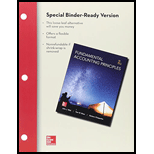
Concept explainers
Introduction
A cost incurred in a joint process is known as joint cost.
To Determine
1. The cost allocations on a sales value basis to the three grades of peaches.
2. The Income Statement
3. Whether the delivery costs fit the definition of joint cost.
Answer to Problem 5APSA
Solution
1. The cost allocations are as follows:
| Tree Pruning and Care | ||||
| Grade | Sales Value | Indirect cost | Allocated cost | |
| No.1 | 450000 | 405000 | 194400 | |
| No.2 | 300000 | 405000 | 129600 | |
| No.3 | 187500 | 405000 | 81000 | |
| Total | 937500 | | 405000 | |
| Picking, Sorting and Grading | ||||
| Grade | Sales Value | Indirect cost | Allocated Cost | |
| No.1 | 450000 | 405000 | 97200 | |
| No.2 | 300000 | 405000 | 64800 | |
| No.3 | 187500 | 405000 | 40500 | |
| Total | 937500 | | 202500 | |
| 4DQ | ||||
| Grade | Sales Value | Indirect cost | Allocated Cost | |
| No.1 | 450000 | 30000 | 18000 | |
| No.2 | 300000 | 12000 | ||
| No.3 | 187500 | 37500 | 37500 | |
| Total | 937500 | 67500 | 67500 | |
2. The income statement is shown in the explanation section.
3. Yes, the delivery costs fits the definition of joint cost.
Explanation of Solution
Explanation
1. The calculation of the cost allocations are as follows:
| Tree Pruning and Care | ||||
| Grade | Sales Value | Percentage of Allocation Base | Indirect cost | Allocated Cost |
| No.1 | 450000 | 405000 | ||
| No.2 | 300000 | 405000 | ||
| No.3 | 187500 | 405000 | ||
| Total | 937500 | | | 405000 |
| Picking, Sorting and Grading | ||||
| Grade | Sales Value | Percentage of Allocation Base | Indirect cost | Allocated Cost |
| No.1 | 450000 | 405000 | ||
| No.2 | 300000 | 405000 | ||
| No.3 | 187500 | 405000 | ||
| Total | 937500 | | | 202500 |
| Delivery | ||||
| Grade | Sales Value | Percentage of Allocation Base | Indirect cost | Allocated Cost |
| No.1 | 450000 | 30000 | ||
| No.2 | 300000 | 30000 | ||
| | 750000 | | | |
| No.3 | 187500 | 37500 | ||
| Total | 937500 | | | 67500 |
2. The income statement is as follows:
| GEORGIA ORCHIDS | ||||
| INCOME STATEMENT | ||||
| For the Year Ended December 31, 2015 | ||||
| Particulars | No.1 | No.2 | No.3 | Combined |
| Sales (A) | 450000 | 300000 | 187500 | 937500 |
| | ||||
| Less Costs | | | | |
| Tree pruning and care | 194400 | 129600 | 81000 | 405000 |
| Picking, sorting and grading | 97200 | 64800 | 40500 | 202500 |
| Delivery costs | 18000 | 12000 | 37500 | 67500 |
| Total costs (B) | 309600 | 206400 | 159000 | 675000 |
| Net Income (A-B) | 140400 | 93600 | 28500 | 262500 |
3. Yes. The delivery costs fits the definition of a joint cost as the No.1 & 2 grades of peaches are allocated delivery costs which are incurred on transporting them to the buyer as their destination is the same. No. 3 graded peaches delivery costs are directly linked with the produce going to the cannery.
Want to see more full solutions like this?
Chapter 24 Solutions
Loose Leaf for Fundamentals of Accounting Principles and Connect Access Card
- Please provide the accurate answer to this financial accounting problem using appropriate methods.arrow_forwardI am searching for the accurate solution to this general accounting problem with the right approach.arrow_forwardCan you help me solve this general accounting question using the correct accounting procedures?arrow_forward
- Can you help me solve this general accounting question using the correct accounting procedures?arrow_forwardI need help solving this general accounting question with the proper methodology.arrow_forwardI need the correct answer to this general accounting problem using the standard accounting approach.arrow_forward

 AccountingAccountingISBN:9781337272094Author:WARREN, Carl S., Reeve, James M., Duchac, Jonathan E.Publisher:Cengage Learning,
AccountingAccountingISBN:9781337272094Author:WARREN, Carl S., Reeve, James M., Duchac, Jonathan E.Publisher:Cengage Learning, Accounting Information SystemsAccountingISBN:9781337619202Author:Hall, James A.Publisher:Cengage Learning,
Accounting Information SystemsAccountingISBN:9781337619202Author:Hall, James A.Publisher:Cengage Learning, Horngren's Cost Accounting: A Managerial Emphasis...AccountingISBN:9780134475585Author:Srikant M. Datar, Madhav V. RajanPublisher:PEARSON
Horngren's Cost Accounting: A Managerial Emphasis...AccountingISBN:9780134475585Author:Srikant M. Datar, Madhav V. RajanPublisher:PEARSON Intermediate AccountingAccountingISBN:9781259722660Author:J. David Spiceland, Mark W. Nelson, Wayne M ThomasPublisher:McGraw-Hill Education
Intermediate AccountingAccountingISBN:9781259722660Author:J. David Spiceland, Mark W. Nelson, Wayne M ThomasPublisher:McGraw-Hill Education Financial and Managerial AccountingAccountingISBN:9781259726705Author:John J Wild, Ken W. Shaw, Barbara Chiappetta Fundamental Accounting PrinciplesPublisher:McGraw-Hill Education
Financial and Managerial AccountingAccountingISBN:9781259726705Author:John J Wild, Ken W. Shaw, Barbara Chiappetta Fundamental Accounting PrinciplesPublisher:McGraw-Hill Education





